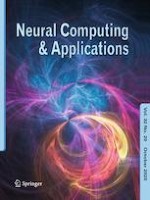21-10-2019 | Recent Advances in Deep Learning for Medical Image Processing
Deep architectures for high-resolution multi-organ chest X-ray image segmentation
Published in: Neural Computing and Applications | Issue 20/2020
Log inActivate our intelligent search to find suitable subject content or patents.
Select sections of text to find matching patents with Artificial Intelligence. powered by
Select sections of text to find additional relevant content using AI-assisted search. powered by
